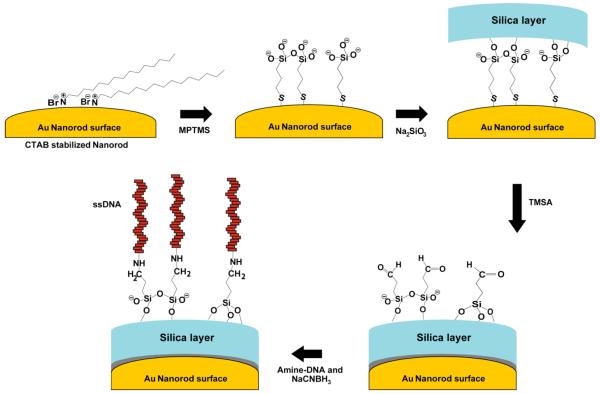Figure 1.
Schematic diagram of the surface reactions employed to obtain DNA-functionalized gold nanorods. First the nanorods were coated with a thin silica layer using the silane coupling agent, 3-mercaptopropyl trimethoxysilane, followed by reaction with sodium silicate. Surface bound aldehyde functional groups were attached to the silica film by using trimethoxysilane aldehyde and then used to conjugate the amine modified DNA in a reductive amination reaction.

